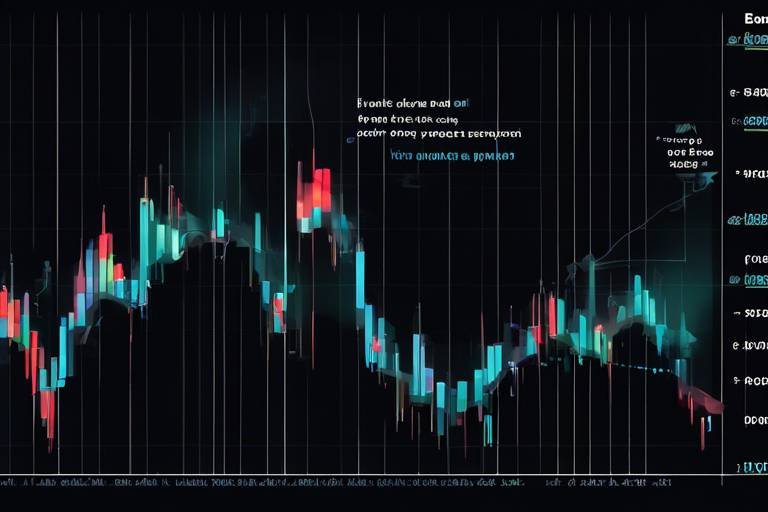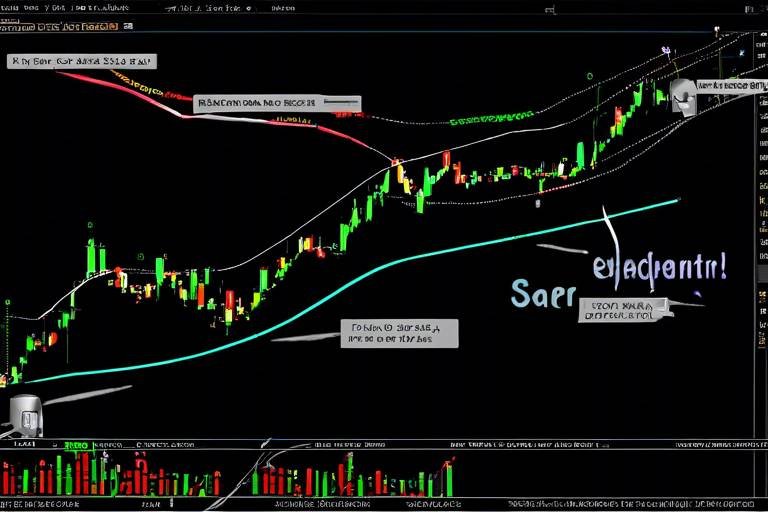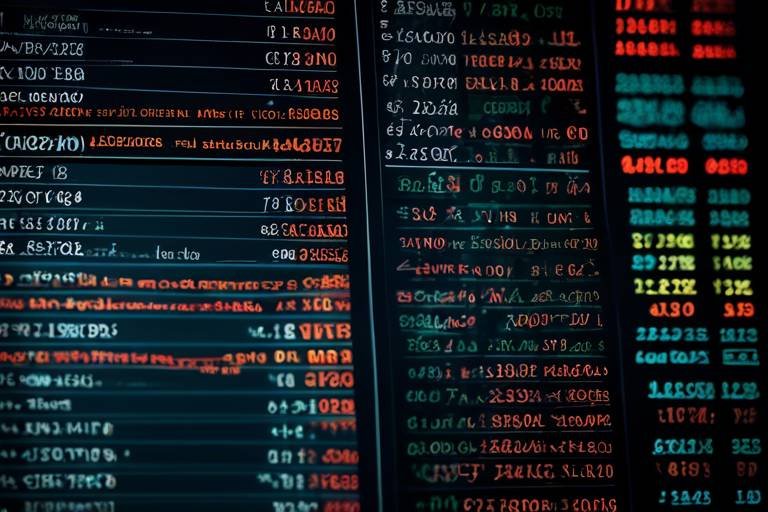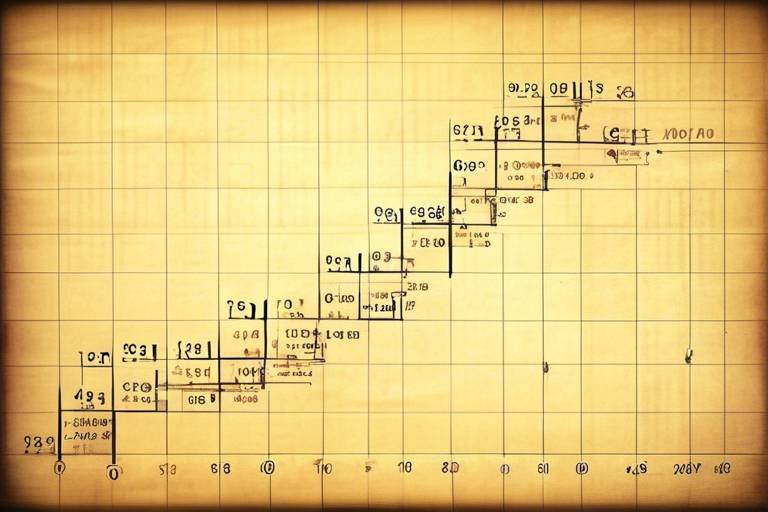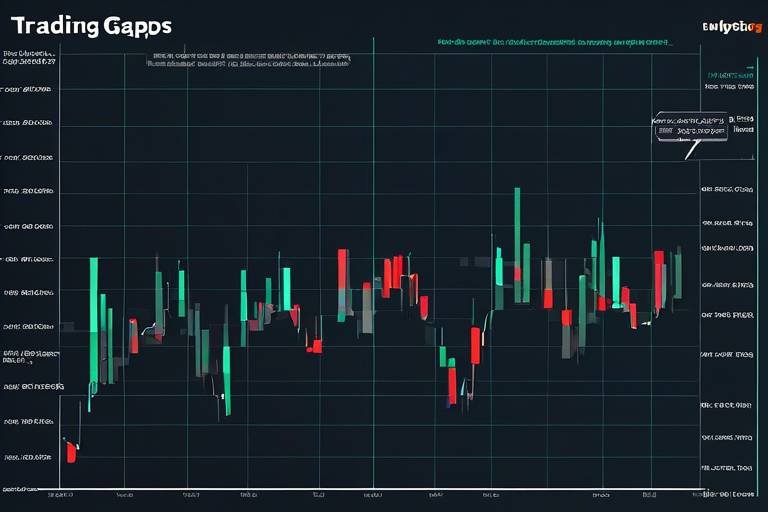Understanding the Basics of Trading Systems and Strategies
Trading is not just about buying low and selling high; it’s a complex world where strategies and systems play a pivotal role in determining success. Whether you're a novice stepping into the trading arena or an experienced trader looking to refine your approach, understanding the fundamentals of trading systems and strategies is essential. Think of trading systems as a well-structured roadmap that guides you through the often turbulent waters of the financial markets. Without this roadmap, you might find yourself lost, making impulsive decisions based on fleeting emotions rather than solid data.
At its core, a trading system is a set of rules that dictate when to enter and exit trades. This systematic approach not only helps in keeping emotions at bay but also ensures consistency in trading practices. Imagine trying to navigate a dense forest without a map; you might stumble upon a few clearings, but more often than not, you’ll find yourself going in circles. Similarly, without a trading system, traders can easily get overwhelmed by market fluctuations, leading to poor decision-making.
Moreover, trading strategies are the specific methods employed within these systems. They can vary widely, catering to different risk appetites and time commitments. For instance, day trading might appeal to those who thrive on quick decisions and fast-paced environments, while swing trading might attract those who prefer a more laid-back approach, holding positions for days or even weeks. Understanding the nuances of these strategies is crucial for aligning them with your personal trading goals.
In this article, we will delve deeper into the various types of trading strategies, the significance of risk management, and the tools that can enhance your trading experience. By the end, you’ll have a clearer understanding of how to navigate the trading landscape effectively and make informed decisions that can lead to better outcomes.
Trading systems provide structure and discipline, helping traders make informed decisions based on data rather than emotions. Understanding their significance can lead to improved trading outcomes and risk management. A well-defined trading system not only enhances your ability to analyze market conditions but also instills a sense of confidence in your trading decisions. This is especially important in a market that can be unpredictable and volatile.
There are various trading strategies, each with its unique characteristics, risk levels, and time commitments. Here’s a quick overview:
- Day Trading: Involves executing multiple trades within a single day to capitalize on small price movements.
- Swing Trading: Focuses on capturing short- to medium-term price moves, typically holding positions for several days to weeks.
- Position Trading: A longer-term strategy where traders hold positions for weeks to months, relying on fundamental analysis.
Day trading is like sprinting in a marathon; it requires quick decision-making and a solid understanding of market trends. Traders who engage in this strategy aim to profit from the small price fluctuations that occur throughout the day. However, it’s not just about speed; successful day trading also involves a deep understanding of technical analysis and market sentiment.
While day trading can yield high returns, it also comes with significant risks. Here are some pros and cons to consider:
- Pros: Potential for high returns, flexibility in trading hours, and the excitement of fast-paced trading.
- Cons: Emotional stress, high transaction costs, and the potential for substantial losses.
Utilizing the right tools can significantly enhance a day trader's effectiveness. Essential tools include:
- Trading Platforms: Software that allows traders to execute trades and analyze market data.
- Charting Software: Helps traders visualize price movements and identify trends.
- Real-Time Data Feeds: Provide up-to-the-minute market information crucial for making timely decisions.
Swing trading is like a dance; it requires timing and finesse to capture short- to medium-term price moves. This strategy allows traders to benefit from market volatility without the need for constant monitoring, making it ideal for those with other commitments. By holding positions for several days to weeks, swing traders can capitalize on price swings while avoiding the emotional rollercoaster that often comes with day trading.
Effective risk management is the backbone of long-term trading success. Implementing strategies such as stop-loss orders and position sizing can help protect capital and minimize losses. Think of risk management as your safety net; it allows you to take calculated risks without jeopardizing your entire trading account.
Stop-loss orders are vital tools for limiting potential losses. By setting them appropriately, you can safeguard your investments and gain peace of mind in volatile markets. They act as an automatic exit strategy, ensuring that you don’t hold onto losing positions for too long.
Determining the right position size is crucial for managing risk. This involves calculating the potential loss and aligning it with your overall trading capital. A well-thought-out position sizing strategy ensures that you can sustain your trading activities over the long term while minimizing the impact of any single loss.
Q: What is a trading system?
A: A trading system is a set of rules that dictate when to enter and exit trades, helping traders make informed decisions based on data.
Q: How do I choose a trading strategy?
A: Choosing a trading strategy depends on your risk tolerance, time commitment, and market knowledge. Consider what aligns best with your personal goals.
Q: Why is risk management important?
A: Risk management is essential for protecting your capital and ensuring long-term success in trading. It helps you minimize losses and maintain a sustainable trading approach.

The Importance of Trading Systems
Trading systems are the backbone of successful trading, providing a structured approach that helps traders navigate the often chaotic world of financial markets. Without a solid trading system in place, traders might find themselves making decisions based on gut feelings or fleeting emotions, which can lead to disastrous outcomes. Imagine trying to sail a ship without a map or compass; you might end up lost at sea, and the same goes for trading without a well-defined system.
One of the primary benefits of a trading system is that it instills a sense of discipline. When traders have a clear set of rules to follow, they are less likely to deviate from their strategies during moments of market volatility. This discipline is crucial because emotional decision-making can cloud judgment, leading to impulsive trades that rarely end well. By adhering to a trading system, traders can maintain a level of consistency in their approach, which is vital for long-term success.
Moreover, trading systems allow for better risk management. A well-designed system incorporates specific guidelines for determining entry and exit points, as well as how much capital to allocate to each trade. This not only helps traders manage their exposure to risk but also enables them to assess potential rewards against possible losses. For instance, a trader might decide to risk only 1% of their total capital on a single trade, ensuring that even a series of losses won't significantly impact their overall portfolio.
Another essential aspect of trading systems is their reliance on data analysis. Traders who utilize systems often employ technical analysis, which involves studying price charts and market trends to make informed decisions. By analyzing historical data, traders can identify patterns and trends that may help predict future market movements. This analytical approach contrasts sharply with the emotional rollercoaster many traders experience, allowing for a more rational and calculated trading strategy.
In addition to the benefits already mentioned, trading systems can lead to improved performance metrics. By documenting trades and analyzing results, traders can refine their strategies over time. This continuous improvement process is akin to a scientist conducting experiments; they observe outcomes, adjust variables, and aim for better results. Similarly, traders can enhance their trading systems by learning from both successes and failures.
To summarize, the importance of trading systems cannot be overstated. They provide the structure, discipline, and analytical framework necessary for making informed trading decisions. By leveraging a well-defined trading system, traders can improve their risk management, maintain emotional control, and ultimately enhance their performance in the markets. It's like having a reliable GPS system on a long road trip; it guides you, keeps you on track, and helps you reach your destination safely.

Types of Trading Strategies
When diving into the world of trading, it’s crucial to understand that not all strategies are created equal. Each trader has unique goals, risk tolerance, and time availability, which makes the selection of a trading strategy a highly personal decision. Some traders prefer the adrenaline rush of quick trades, while others might lean towards a more laid-back approach. In this section, we’ll explore several popular trading strategies, highlighting their characteristics, risk levels, and the time commitments involved. This knowledge can empower you to choose the right path for your trading journey.
One of the most well-known strategies is day trading, where traders buy and sell securities within the same trading day. Imagine a sprinter racing to the finish line; day traders aim to capitalize on small price fluctuations, often executing dozens of trades in a single day. This strategy requires not only quick decision-making but also a solid grasp of market trends and the ability to read charts effectively.
On the opposite end of the spectrum, we have swing trading. This approach is akin to a long-distance runner who paces themselves for endurance. Swing traders hold positions for a few days to weeks, aiming to capture short- to medium-term price moves. They don’t need to monitor the markets constantly, which can be a huge relief for those balancing trading with other commitments. This strategy allows traders to benefit from market volatility while reducing the stress associated with rapid trades.
Another strategy worth mentioning is position trading. This is like planting a tree and watching it grow over time. Position traders hold onto their investments for months or even years, focusing on long-term trends rather than short-term market fluctuations. This strategy requires patience and a strong understanding of fundamental analysis, as traders must be willing to ride out market ups and downs.
To help you visualize these strategies, here’s a quick comparison table:
| Strategy | Time Frame | Risk Level | Ideal For |
|---|---|---|---|
| Day Trading | Minutes to Hours | High | Active Traders |
| Swing Trading | Days to Weeks | Medium | Part-Time Traders |
| Position Trading | Months to Years | Low | Long-Term Investors |
Choosing the right trading strategy is essential for your success in the markets. Each strategy has its own unique characteristics, and understanding these can help you align your trading style with your personal goals. Whether you’re a thrill-seeker looking to make quick profits or a patient investor willing to wait for the right moment, there’s a strategy out there that suits your needs. The key is to experiment and find what resonates with you, all while keeping your risk management practices in check.
As you embark on your trading journey, remember that the market is ever-changing, and adaptability is crucial. Don’t be afraid to tweak your strategy as you gain experience and learn from your trades. After all, trading is not just about making money; it's about developing a mindset that can withstand the ups and downs of the market.
- What is the best trading strategy for beginners? Beginners often benefit from swing trading or position trading, as these strategies require less constant monitoring and can be less stressful.
- How much time do I need to dedicate to day trading? Day trading requires a significant time commitment, often necessitating several hours a day to monitor the markets and execute trades.
- Can I use multiple trading strategies at once? Yes, many traders use a combination of strategies depending on market conditions and their personal goals.
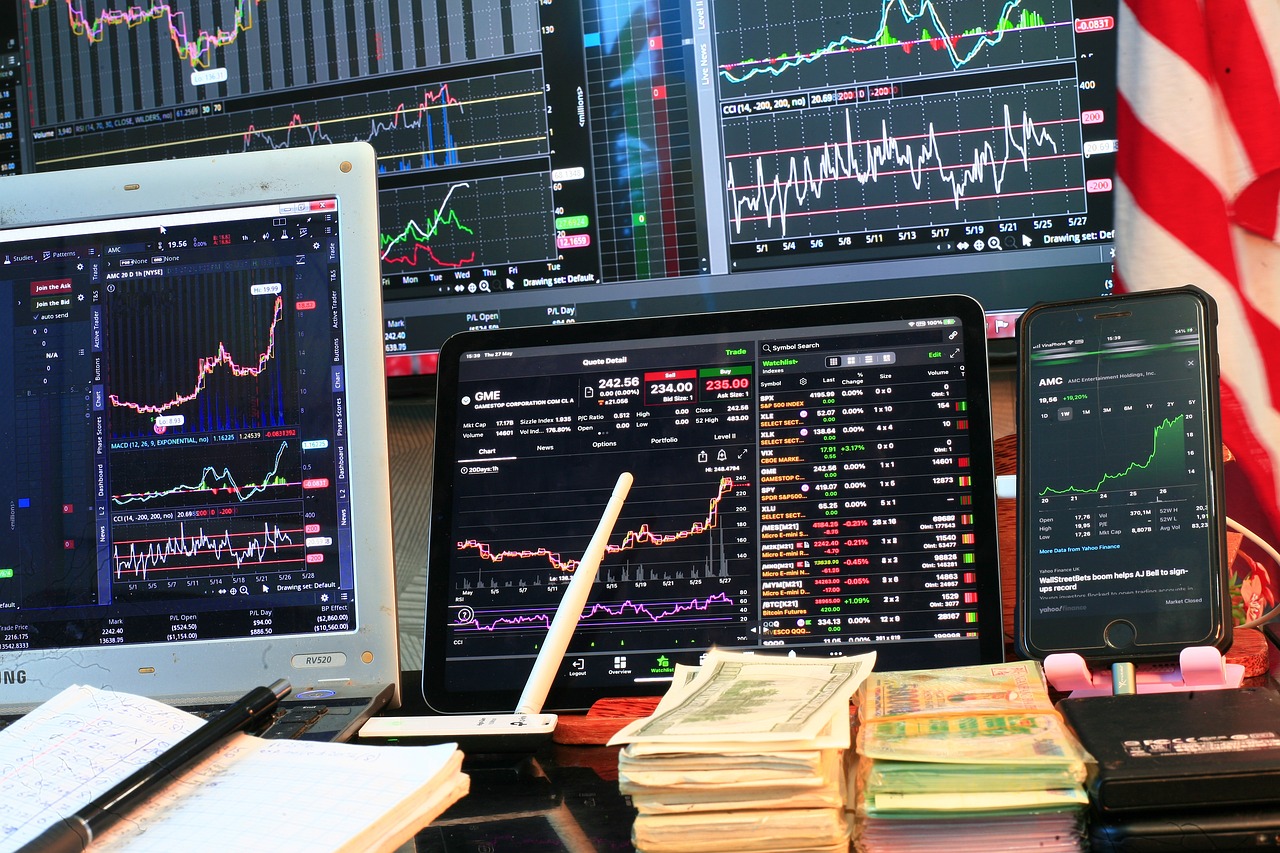
Day Trading Explained
Day trading is like riding a roller coaster; it’s thrilling, fast-paced, and requires a strong stomach. In essence, day trading involves executing multiple trades within a single trading day, aiming to capitalize on small price movements in the market. Unlike traditional investing, where you might hold onto a stock for months or years, day traders buy and sell securities quickly, often within minutes or hours. This strategy demands not only a keen understanding of market trends but also the ability to make rapid decisions, as the window of opportunity can close in the blink of an eye.
To succeed in day trading, one must be equipped with a robust strategy and a clear understanding of the market dynamics at play. Traders often rely on technical analysis and chart patterns, using various indicators to predict short-term price movements. For instance, moving averages, Relative Strength Index (RSI), and Bollinger Bands are popular tools that help traders gauge market conditions and make informed decisions. However, it’s not just about the numbers; emotional discipline plays a crucial role. The ability to remain calm under pressure, avoid impulsive decisions, and stick to a predetermined plan can be the difference between profit and loss.
One of the most significant aspects of day trading is the necessity for a solid trading plan. This plan should outline entry and exit points, risk management strategies, and the specific criteria for selecting trades. A well-structured plan acts as a roadmap, guiding traders through the chaotic landscape of the market. Without it, traders may find themselves lost, making decisions based on fear or greed rather than logic. Here’s a quick overview of what a comprehensive day trading plan might include:
| Component | Description |
|---|---|
| Trading Goals | Define what you aim to achieve through day trading, such as monthly income or percentage returns. |
| Risk Tolerance | Assess how much risk you are willing to take per trade and overall. |
| Trade Selection Criteria | Establish the indicators and patterns that will guide your trades. |
| Entry and Exit Strategy | Detail when to enter a trade and when to cut losses or take profits. |
| Review Process | Plan for regular evaluations of your trading performance to identify areas for improvement. |
Moreover, day trading isn’t just about making quick profits; it also carries inherent risks. The potential for high returns comes with the possibility of significant losses, making it essential for traders to implement robust risk management strategies. This includes setting stop-loss orders to limit losses on trades that don’t go as planned. By understanding how to manage risk effectively, traders can protect their capital and ensure longevity in the market.
In conclusion, day trading can be an exhilarating way to engage with the stock market, offering the chance to make money quickly. However, it requires a blend of strategy, discipline, and a willingness to adapt to ever-changing market conditions. For those who are prepared to put in the time and effort, the rewards can be substantial. Just remember, in the world of day trading, knowledge is your best ally, and preparation is key!
- What is the best time to day trade? The best time to day trade is during market hours when volatility is high, typically the first hour and the last hour of trading.
- Do I need a lot of money to start day trading? While you can start with a small amount, having sufficient capital can help manage risks and meet minimum requirements set by brokers.
- How much can I expect to earn from day trading? Earnings can vary widely based on skills, strategies, and market conditions; some traders may earn a few hundred dollars a day, while others may lose money.
- Is day trading risky? Yes, day trading is inherently risky due to the rapid pace and volatility of the market, so proper risk management is crucial.
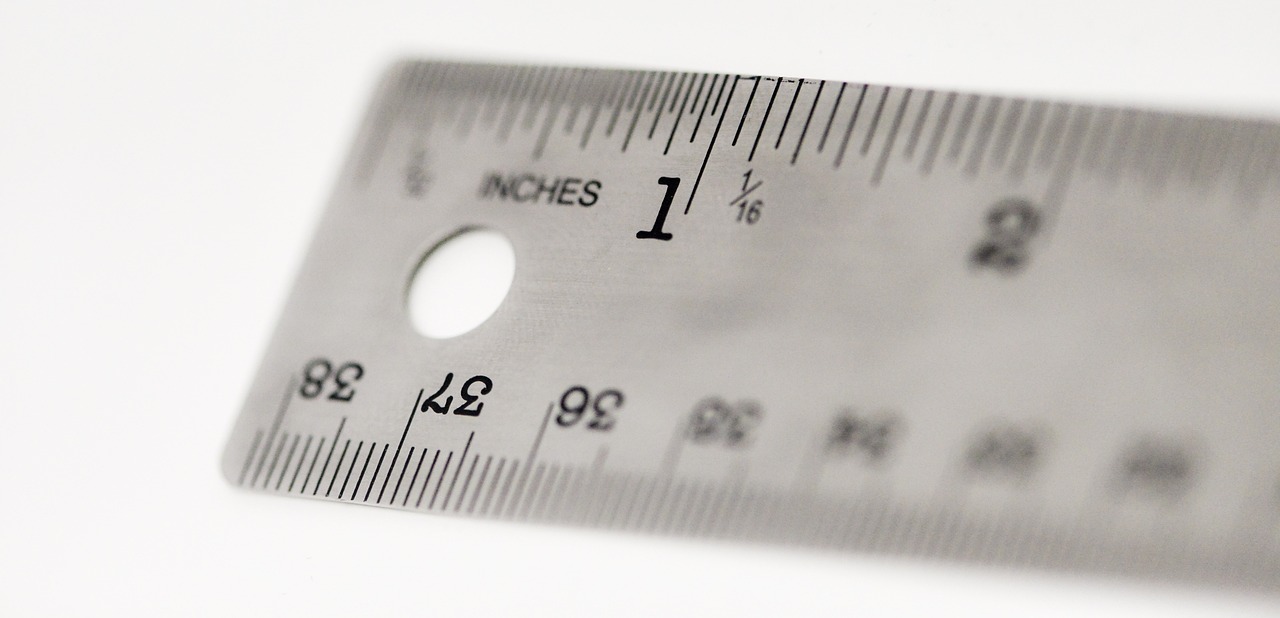
Pros and Cons of Day Trading
Day trading is like riding a roller coaster—thrilling and risky all at once. It offers the allure of quick profits, but it’s not without its pitfalls. Let's dive into the pros and cons of this fast-paced trading strategy to help you decide if it's the right fit for you.
On the positive side, one of the biggest advantages of day trading is the potential for high returns. Since trades are executed within the same day, traders can capitalize on small price movements, which can accumulate into significant profits. Imagine catching a wave just right; if you time it perfectly, you can ride it all the way to the shore. Additionally, day traders have the opportunity to make multiple trades in a single day, which can lead to increased earning potential.
However, with great reward comes great risk. Day trading can be emotionally taxing. The rapid pace of the market can lead to stress and anxiety, as traders must make quick decisions under pressure. It’s not uncommon for day traders to experience the emotional highs and lows similar to those of a high-stakes gambler. Furthermore, the potential for substantial losses is very real. If a trader misjudges the market or fails to react quickly enough, they could find themselves facing significant financial setbacks.
Another aspect to consider is the time commitment. Day trading requires a substantial amount of time and focus. Traders need to monitor the markets continuously, often spending hours in front of their screens. This can be a double-edged sword; while it allows for immediate decision-making, it can also lead to burnout and fatigue. Balancing this intense focus with personal life can be challenging.
To summarize the pros and cons, here’s a quick comparison:
| Pros | Cons |
|---|---|
| High potential returns | Significant risk of loss |
| Multiple trading opportunities daily | Emotional stress and anxiety |
| Quick decision-making | Time-intensive commitment |
In conclusion, day trading can be a lucrative venture for those who thrive in fast-paced environments and can manage the emotional roller coaster that comes with it. However, it's crucial to weigh these pros and cons carefully. If you’re considering stepping into the world of day trading, remember that preparation and education are key. Equip yourself with the right tools and knowledge to navigate this exciting yet challenging landscape.
- What is day trading? Day trading involves buying and selling financial instruments within the same trading day, aiming to profit from short-term price movements.
- Do I need a lot of money to start day trading? While you can start with a smaller amount, having sufficient capital is essential to manage risks and meet margin requirements.
- What tools do I need for day trading? Successful day traders often use advanced trading platforms, charting software, and real-time data feeds to make informed decisions.
- Is day trading suitable for everyone? No, day trading requires a specific mindset, risk tolerance, and time commitment, making it more suitable for some individuals than others.

Tools for Successful Day Trading
When it comes to day trading, having the right tools at your disposal can make all the difference between success and failure. Just like a chef needs quality knives and a musician requires a well-tuned instrument, a day trader must equip themselves with the appropriate resources to navigate the fast-paced world of the stock market. So, what are these essential tools that can elevate your trading game? Let’s dive in!
First and foremost, a reliable trading platform is crucial. This is your command center, where all the action happens. A good platform should offer a user-friendly interface, fast execution speeds, and a variety of trading options. Look for platforms that provide advanced charting tools, which allow you to analyze price movements and trends effectively. Some popular platforms include MetaTrader 4, Thinkorswim, and TradeStation.
Next up, we have charting software. This is where you’ll spend a lot of your time analyzing charts to identify patterns and make informed decisions. Quality charting software should provide real-time data and a range of technical indicators, such as moving averages and Bollinger Bands. Many trading platforms come with built-in charting tools, but standalone software can offer even more features and customization options. Remember, the better your analysis, the more confident your trades will be!
In addition to these, having access to real-time data feeds is essential for day traders. The stock market moves quickly, and having the latest information at your fingertips can give you a competitive edge. Real-time data feeds provide up-to-the-second updates on stock prices, volume, and market news. Many brokers offer these feeds as part of their service, but you can also subscribe to third-party services for even more comprehensive coverage.
Another vital tool is a news aggregator. Staying updated with the latest financial news is key to making informed trading decisions. A news aggregator collects articles and reports from various sources, allowing you to quickly assess market sentiment and react accordingly. Popular news services include Bloomberg, Reuters, and financial news apps that push notifications directly to your device.
Finally, let’s not forget about the importance of a solid trading journal. Keeping track of your trades, strategies, and outcomes is invaluable for learning and improvement. A trading journal helps you reflect on what worked and what didn’t, allowing you to refine your strategy over time. You can use a simple spreadsheet or opt for specialized journaling software designed for traders.
In summary, successful day trading is not just about gut feelings; it’s about leveraging the right tools to make informed decisions. By investing in a reliable trading platform, robust charting software, real-time data feeds, a news aggregator, and maintaining a trading journal, you position yourself for greater success in the fast-paced world of day trading.
- What is day trading? Day trading involves buying and selling financial instruments within the same trading day, aiming to capitalize on short-term price movements.
- Do I need a lot of money to start day trading? While having a larger capital can help, many brokers offer accounts that allow you to start with a modest amount.
- What is the best time to day trade? The best time often depends on market volatility, but many traders find the first hour after the market opens and the last hour before it closes to be the most active.
- How can I manage risk in day trading? Implementing stop-loss orders and proper position sizing are effective strategies for managing risk.

Swing Trading Techniques
Swing trading is a fascinating approach that allows traders to capitalize on market fluctuations over a short to medium-term horizon. Unlike day trading, where positions are opened and closed within the same day, swing traders typically hold positions for several days or even weeks. This strategy is ideal for those who may not have the time to monitor the markets constantly but still want to engage in active trading. By capturing price swings, traders can leverage market volatility to enhance their returns.
One of the fundamental techniques in swing trading is identifying entry and exit points. Traders often use technical analysis to determine when to enter a trade. This involves analyzing price charts and looking for patterns or signals that indicate a potential price movement. For example, traders might look for support and resistance levels, moving averages, or specific chart patterns like head and shoulders or flags. By pinpointing these levels, swing traders can set their entry points more effectively.
Moreover, swing traders often utilize a combination of indicators to confirm their trading decisions. Common indicators include the Relative Strength Index (RSI), which helps assess whether an asset is overbought or oversold, and the Moving Average Convergence Divergence (MACD), which can signal potential reversals. By employing these tools, traders can make more informed decisions, increasing their chances of success.
Another critical aspect of swing trading is risk management. Just like any other trading strategy, swing trading carries risks, and effective risk management techniques can help protect capital. One popular method is setting stop-loss orders, which automatically close a position if the market moves against the trader by a predetermined amount. This strategy not only limits potential losses but also allows traders to maintain discipline and avoid emotional decision-making.
Additionally, swing traders often implement a technique called position sizing. This involves determining the appropriate amount of capital to allocate to each trade based on the trader's overall account size and risk tolerance. For instance, many traders adhere to the rule of risking no more than 1-2% of their total account balance on a single trade. This approach ensures that even a series of losses won’t significantly impact the trader's overall capital.
To illustrate the potential of swing trading, consider the following table that outlines a hypothetical swing trading scenario:
| Trade Number | Entry Price | Exit Price | Position Size | Profit/Loss |
|---|---|---|---|---|
| 1 | $50 | $55 | 10 shares | +$50 |
| 2 | $55 | $52 | 10 shares | -$30 |
| 3 | $52 | $58 | 10 shares | +$60 |
| 4 | $58 | $54 | 10 shares | -$40 |
This table shows how a swing trader might enter and exit positions, along with the corresponding profits and losses. As you can see, even with some losses, the overall strategy can still yield positive results when managed effectively.
In conclusion, swing trading is a powerful technique that can provide significant opportunities for profit. By mastering entry and exit points, utilizing technical indicators, and implementing robust risk management strategies, traders can navigate the markets with greater confidence. Whether you're a novice or an experienced trader, understanding swing trading techniques can enhance your trading toolkit and help you achieve your financial goals.
- What is swing trading?
Swing trading involves holding positions for several days to weeks to capitalize on short to medium-term price movements.
- How do I identify entry and exit points in swing trading?
Traders use technical analysis, including chart patterns and indicators, to determine optimal entry and exit points.
- What is the importance of risk management in swing trading?
Effective risk management helps protect capital and minimizes losses, ensuring long-term trading success.
- Can I swing trade with a small account?
Yes, many traders successfully swing trade with smaller accounts by carefully managing risk and position sizes.

Risk Management in Trading
Effective risk management is the backbone of successful trading. It's not just about making profits; it's about protecting your capital and ensuring you can survive the ups and downs of the market. Think of trading like sailing a ship. You wouldn’t set out to sea without a life jacket or a plan for storms, right? Similarly, having a solid risk management strategy can save you from sinking when the market gets turbulent.
One of the essential components of risk management is the use of stop-loss orders. These are like safety nets that catch you when a trade goes south. By setting a stop-loss order, you can automatically sell a security when it reaches a certain price, limiting your losses. This way, you’re not left staring at a screen, hoping the price will bounce back. Instead, you can walk away, knowing you’ve protected your investment.
Another critical factor is position sizing. This involves determining how much of your capital you’re willing to risk on a single trade. A common rule of thumb is to risk no more than 1-2% of your total trading capital on any given trade. By adhering to this guideline, you’re effectively spreading your risk across multiple trades, which can help you stay afloat even when some trades don’t go as planned.
To illustrate the importance of position sizing, consider the following table:
| Account Balance | Risk per Trade (2%) | Maximum Loss Before Account is Affected |
|---|---|---|
| $10,000 | $200 | 50 trades at a $200 loss |
| $5,000 | $100 | 50 trades at a $100 loss |
| $20,000 | $400 | 50 trades at a $400 loss |
This table demonstrates how your account balance influences how much you can risk. The more you have, the more you can afford to lose without jeopardizing your overall trading strategy. This is why understanding your financial limits and adhering to them is crucial.
Finally, remember that no trading strategy is foolproof. Markets can be unpredictable, and even the best traders face losses. The key is to accept that losses are part of the game and to have a plan in place to manage them. This mindset can help you stay calm and collected, even when things don’t go your way.
- What is the purpose of risk management in trading?
Risk management aims to protect your capital and minimize losses, ensuring long-term trading success. - How do stop-loss orders work?
Stop-loss orders automatically sell a security when it reaches a predetermined price, limiting potential losses. - What is position sizing?
Position sizing refers to determining how much capital to risk on a single trade, often recommended to be 1-2% of your total account balance. - Can I trade without risk management?
While you can trade without a risk management strategy, it significantly increases the likelihood of substantial losses.

Setting Stop-Loss Orders
When it comes to trading, one of the most critical tools in your arsenal is the stop-loss order. Think of it as a safety net that can help you avoid significant losses when the market takes an unexpected turn. Setting stop-loss orders is not just a smart practice; it's a fundamental aspect of a disciplined trading strategy. They allow you to define your risk before entering a trade, which can be a game-changer for both novice and seasoned traders alike.
So, how do you go about setting these protective barriers? First, you need to determine the price level at which you want to exit a trade if it goes against you. This requires a bit of analysis and an understanding of the stock or asset you are trading. A common method is to set the stop-loss order based on a percentage of the current price. For example, if you purchase a stock at $100 and decide to set a stop-loss at 10%, you would place your stop-loss at $90. This way, if the stock price drops to $90, your order will trigger, and your position will be sold automatically, thus limiting your loss to $10 per share.
However, setting a stop-loss isn’t just about picking a random percentage. It’s essential to consider the volatility of the asset. Some stocks are more volatile than others, meaning they can swing significantly in price over short periods. If you set your stop-loss too close to your entry point, you might find yourself stopped out of a trade due to normal market fluctuations. On the flip side, setting it too far away can expose you to larger losses than you initially intended. This is where understanding the average true range (ATR) of an asset can be beneficial, as it helps you gauge its volatility and set your stop-loss accordingly.
To illustrate the importance of stop-loss orders and how to set them effectively, consider the following table:
| Asset | Entry Price | Stop-Loss Level (10%) | ATR (Average True Range) | Recommended Stop-Loss Level |
|---|---|---|---|---|
| Stock A | $100 | $90 | $5 | $95 |
| Stock B | $50 | $45 | $2 | $48 |
In the table above, you can see how different assets might require different approaches to setting stop-loss levels. Stock A, with a higher entry price and ATR, may warrant a more conservative stop-loss level compared to Stock B, which is less volatile. Understanding these nuances can help you make more informed decisions and protect your capital effectively.
Another critical factor to consider when setting stop-loss orders is the market conditions. During periods of high volatility, such as earnings reports or economic announcements, prices can swing wildly. In such cases, you might want to widen your stop-loss to avoid being prematurely stopped out. On the other hand, in a stable market, tighter stop-loss levels may be more appropriate.
Ultimately, setting stop-loss orders is about finding a balance between protecting your capital and allowing your trades to breathe. It's an art as much as it is a science. Regularly reviewing and adjusting your stop-loss orders based on market conditions, asset performance, and your trading strategy is essential for long-term success. Remember, the goal is not just to avoid losses but to stay in the game long enough to capitalize on profitable opportunities.
- What is a stop-loss order? A stop-loss order is an instruction to sell a security when it reaches a certain price, helping to limit potential losses.
- How do I determine the right stop-loss level? Consider the asset's volatility, your risk tolerance, and market conditions when setting your stop-loss level.
- Can I adjust my stop-loss order after placing it? Yes, you can adjust your stop-loss order at any time to better reflect market conditions or changes in your trading strategy.

Position Sizing Strategies
Position sizing is one of the most critical aspects of a successful trading strategy. It involves determining how much of your capital to allocate to a particular trade, which can significantly impact your overall trading performance. Think of it as the foundation of your trading house; if it's not solid, everything else can come crashing down. A well-thought-out position sizing strategy not only helps in maximizing profits but also plays a crucial role in minimizing losses.
When it comes to position sizing, there are several approaches you can consider. Each method has its own merits, and the best choice often depends on your trading style, risk tolerance, and market conditions. Here are a few popular strategies:
- Fixed Dollar Amount: This strategy involves investing a predetermined dollar amount in each trade. For instance, if you decide to risk $100 per trade, you’ll allocate that amount regardless of your account size. While simple, this approach can be risky if your account fluctuates significantly.
- Percentage of Account: This method involves risking a specific percentage of your total trading capital on each trade. A common recommendation is to risk no more than 1-2% of your account on a single trade. This way, even a series of losses won’t significantly deplete your capital.
- Volatility-Based Position Sizing: This advanced method takes into account the volatility of the asset you’re trading. By assessing how much the price tends to fluctuate, you can adjust your position size accordingly. For example, if a stock has a higher volatility, you may choose to reduce your position size to mitigate risk.
In addition to these strategies, it’s essential to consider your trading goals and the specific characteristics of the market you’re operating in. For instance, a trader focusing on day trading may adopt a different approach compared to someone engaged in swing trading. The key is to find a balance that works for you and stick to it.
To illustrate the impact of position sizing, let’s look at a simple example:
| Account Size | Risk Percentage | Risk Amount | Position Size (at $10/share) |
|---|---|---|---|
| $10,000 | 1% | $100 | 10 shares |
| $10,000 | 2% | $200 | 20 shares |
| $5,000 | 1% | $50 | 5 shares |
This table demonstrates how varying the risk percentage affects the position size. As you can see, with a larger account and a higher risk percentage, you can afford to buy more shares. However, if your account size decreases, the number of shares you can purchase also diminishes, emphasizing the importance of calculating your position size correctly.
Ultimately, mastering position sizing can be the difference between a thriving trading career and a series of devastating losses. It’s not just about how much you make but how much you can afford to lose. By taking the time to develop a robust position sizing strategy, you’re setting yourself up for long-term success in the trading arena.
1. What is position sizing?
Position sizing refers to the amount of capital allocated to a particular trade, which is crucial for managing risk and maximizing returns.
2. How do I determine my position size?
You can determine your position size by calculating the risk you are willing to take on a trade and adjusting it based on your overall account size and risk tolerance.
3. Why is position sizing important?
Proper position sizing helps mitigate potential losses and ensures that you can sustain your trading activities over the long term, even during losing streaks.
4. Can I change my position sizing strategy?
Absolutely! Your position sizing strategy can evolve as your trading experience and market conditions change. Regularly reassessing your approach is a good practice.
Frequently Asked Questions
- What is a trading system?
A trading system is a structured approach to trading that utilizes specific rules and criteria to make trading decisions. It helps traders to eliminate emotional biases and stick to a disciplined strategy, ultimately improving their chances of success in the market.
- How do I choose the right trading strategy?
Choosing the right trading strategy depends on your individual goals, risk tolerance, and time commitment. Consider factors like how much time you can dedicate to trading daily, your experience level, and whether you prefer short-term or long-term investments. It’s often helpful to test different strategies through practice accounts before committing real capital.
- What are the risks associated with day trading?
Day trading can lead to significant financial losses due to its fast-paced nature. Traders must be prepared for emotional stress and the risk of making impulsive decisions. Additionally, the requirement for constant market monitoring can be overwhelming, especially for beginners.
- What tools do I need for successful day trading?
Successful day trading typically requires a combination of tools, including a reliable trading platform, real-time market data feeds, and advanced charting software. These tools help traders analyze market trends and execute trades quickly, which is essential for capitalizing on small price movements.
- What is swing trading?
Swing trading is a strategy that involves holding positions for several days to weeks to capture short- to medium-term price movements. This approach allows traders to take advantage of market volatility without the need for constant monitoring, making it a popular choice among those who may not be able to dedicate their entire day to trading.
- How can I manage risk in trading?
Effective risk management is crucial for long-term trading success. Implementing strategies like stop-loss orders and proper position sizing can help protect your capital. By determining how much of your total trading capital to risk on each trade, you can minimize potential losses and maintain sustainability in your trading activities.
- What are stop-loss orders and why are they important?
Stop-loss orders are instructions to sell a security when it reaches a certain price, helping to limit potential losses. They are essential in volatile markets as they provide traders with a safety net, allowing them to stick to their trading plan without emotional interference.
- How do I determine the right position size for my trades?
Determining the right position size involves calculating your potential loss on a trade and aligning it with your overall trading capital. A common rule is to risk only a small percentage of your total capital on any single trade, which helps ensure that you can withstand a series of losses without depleting your account.









